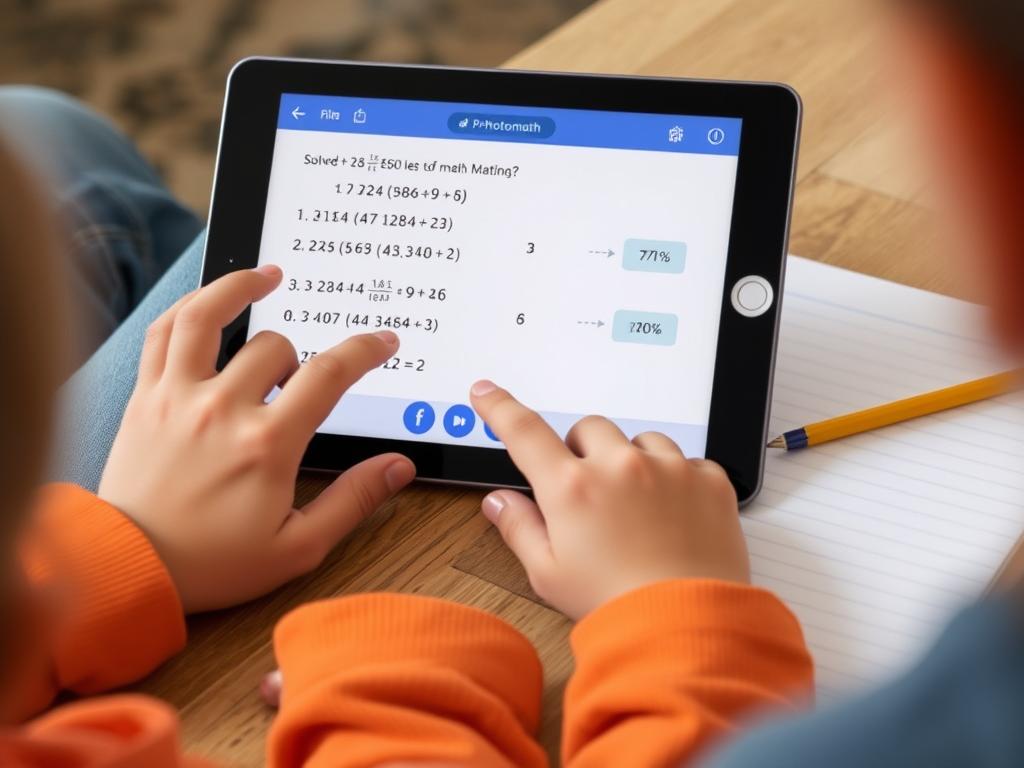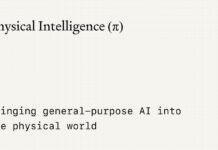The mental load of parenting has never been heavier. Between coordinating schedules, managing homework, planning nutritious meals, and creating consistent bedtime routines, modern parents are juggling more responsibilities than ever before. But there’s good news on the horizon: AI parenting tools are emerging as valuable allies in this daily balancing act. From personalized learning assistants to meal planners and bedtime story generators, these digital helpers are transforming how families manage their most challenging routines.
The AI Revolution in Family Life
Artificial intelligence has quietly entered our homes, not as the sci-fi robots we once imagined, but as practical tools designed to lighten our daily load. For parents, these AI parenting tools are becoming game-changers, offering personalized support exactly when and where it’s needed most.
Sarah, a mother of twins in Chicago, describes her experience: “Before discovering AI assistants, I was constantly overwhelmed trying to help both kids with different homework assignments while also preparing dinner. Now, my children get personalized learning support while I focus on cooking—and sometimes even get AI help with meal planning too!”
What makes these tools particularly valuable is their ability to adapt to your family’s unique needs. Whether you’re struggling with math homework, meal ruts, or bedtime battles, there’s likely an AI solution designed to address your specific challenge.
Homework: AI-Powered Learning Assistants

The days of parents struggling to remember algebra formulas or grammar rules are fading. AI tutoring tools now offer personalized, patient support for learners of all ages—and relief for parents who may not remember how to calculate the area of a trapezoid.
Top AI Homework Assistants
| Tool Name | Best For | Key Features | Age Range |
| Khan Academy | Comprehensive learning | Personalized learning paths, instant feedback, progress tracking | K-12 & College |
| Photomath | Math problem-solving | Camera scanning, step-by-step solutions, multiple solving methods | Elementary to College |
| Quizlet | Flashcards & memorization | AI-generated study sets, personalized quizzes, progress tracking | Middle School to Adult |
| Socratic by Google | Multi-subject help | Voice/text questions, step-by-step explanations, visual learning aids | Middle School to College |
How Parents Are Using AI for Homework
Michael, a father of three in Boston, shares: “My middle schooler was struggling with math concepts, and I was spending hours trying to help him each night. We started using Photomath, and it’s been transformative. He scans the problem, gets a detailed explanation, and only comes to me when he truly needs help understanding a concept.”
Benefits of AI Homework Tools
- Provides immediate help when parents aren’t available
- Offers multiple explanation methods for different learning styles
- Reduces homework frustration and family tension
- Builds student independence and confidence
- Adapts to each child’s learning pace and style
Considerations
- May need parental oversight to ensure understanding vs. copying
- Screen time management required
- Some tools require subscription fees
- Not all subjects have equally strong AI support
Effective Prompts for Homework Help
For general AI assistants like ChatGPT, the right prompt can make all the difference. Try these parent-tested prompts:
For math help: “Explain how to solve [specific problem] in simple terms a 10-year-old would understand, with step-by-step instructions and a visual example.”
For writing assistance: “Provide 3 age-appropriate topic ideas for a 5th-grade essay about environmental conservation, with 3 main points for each topic.”
For reading comprehension: “Create 5 discussion questions about [book title] that will help an 8-year-old understand the main character’s motivation and growth.”
Ready to transform homework time?
Try Khan Academy’s personalized learning platform with AI-powered recommendations tailored to your child’s needs.
Meals: AI-Powered Meal Planning and Recipe Generation

The daily “what’s for dinner?” question plagues parents everywhere. AI meal planning tools are stepping in to eliminate decision fatigue, reduce food waste, and accommodate dietary restrictions with personalized recommendations.
How AI is Transforming Family Meals
Lisa, a working mother of two in Seattle, explains: “I used to spend Sunday afternoons stressing over meal plans and grocery lists. Now I use Mealime to generate a week of kid-friendly meals that work with our family’s dietary needs. It creates my shopping list automatically, and I can adjust serving sizes when my in-laws visit.”
| Tool Name | Best For | Key Features | Special Capabilities |
| Mealime | Busy families | Personalized meal plans, automatic grocery lists, quick recipes | Dietary restriction filtering, portion adjustments |
| PlateJoy | Health-focused families | Nutrition-optimized meal plans, pantry tracking, grocery delivery integration | Health goal settings, food waste reduction |
| ChatGPT | Custom recipe creation | Flexible recipe generation, ingredient substitutions, cooking technique explanations | Works with whatever ingredients you have on hand |
| AnyList | Family collaboration | Shared grocery lists, recipe organization, meal planning calendar | Real-time list updates, store aisle categorization |
AI Meal Planning Success Stories
“My picky eaters were stuck in a chicken nugget rut. I asked ChatGPT to generate ‘kid-friendly vegetable recipes that don’t look like vegetables,’ and now my children actually request the ‘green monster mashed potatoes’ and ‘treasure chest casserole.’ It’s been a game-changer for our family nutrition.”
Effective Prompts for Meal Planning
For weekly meal plans: “Create a 5-day meal plan for a family with two children ages 3 and 6. Include breakfast, lunch, and dinner. We need dairy-free options, prefer meals ready in under 30 minutes, and want to incorporate seasonal vegetables like zucchini and tomatoes.”
For picky eaters: “Suggest 5 creative ways to incorporate vegetables into meals for children who don’t like visible vegetables. We particularly need ideas for spinach, carrots, and bell peppers.”
For using leftovers: “I have leftover roasted chicken, half a box of pasta, some broccoli, and cheese in my refrigerator. Suggest 3 different family-friendly meals I can make with these ingredients.”
Simplify your family meal planning
Try Mealime for personalized meal plans, automatic grocery lists, and quick, family-friendly recipes.
Bedtime: AI-Enhanced Sleep and Routine Management

Bedtime struggles are universal in parenthood. AI tools are now helping families establish consistent routines, create personalized sleep environments, and even generate custom bedtime stories tailored to each child’s interests and emotional needs.
AI Bedtime Solutions for Families
| Tool Name | Best For | Key Features | How It Helps |
| Hatch Restore | Sleep environment | Smart light, sound machine, sunrise alarm | Creates consistent sleep cues and gentle wake-ups |
| Nanit | Sleep tracking | Sleep pattern analysis, breathing monitoring, sleep coaching | Provides insights to optimize sleep conditions |
| Nookly | Personalized stories | AI-generated bedtime stories customized to child’s interests and needs | Creates engaging stories that address specific emotions |
| Moshi | Sleep meditation | Audio stories, sleep sounds, guided relaxations | Calms active minds and eases bedtime anxiety |
Parent Success Stories
“My daughter was having nightmares about starting kindergarten. I used Nookly to create a personalized bedtime story about a little girl just like her who was nervous about school but discovered it was full of adventures and new friends. After a few nights of reading variations of this story, her anxiety noticeably decreased, and she started getting excited about school.”
Effective Prompts for Bedtime AI
For personalized bedtime stories: “Create a 5-minute bedtime story about a child named [child’s name] who loves [interest/hobby] and is feeling [current emotion/challenge]. Include gentle lessons about [value you want to reinforce] and end with a calming conclusion.”
For bedtime routines: “Design a visual bedtime routine chart for a 4-year-old who needs extra transition time. Include 6 steps from dinner to sleep, with emphasis on calming activities.”
For sleep environment: “Suggest optimal light, sound, and temperature settings for a sensory-sensitive 6-year-old who has trouble falling asleep.”
Transform bedtime struggles into peaceful nights
Try Nookly for personalized bedtime stories that address your child’s specific interests and emotional needs.
Balancing AI and Human Connection

While AI parenting tools offer valuable support, they work best as supplements to—not replacements for—human connection. Finding the right balance is key to integrating these tools effectively into family life.
Ethical Considerations for AI Parenting Tools
Screen Time Management
- Set clear boundaries for when AI tools are used
- Choose tools that require minimal screen interaction when possible
- Balance AI assistance with unplugged family activities
- Model healthy technology use for children
Data Privacy Practices
- Review privacy policies before using AI tools with children
- Understand what data is collected and how it’s used
- Choose tools with strong privacy protections
- Regularly review and delete unnecessary data
Expert Tip: Dr. Emily Chen, child development specialist, recommends the “co-use approach” with AI parenting tools: “The most effective implementation happens when parents and children engage with these tools together, at least initially. This allows parents to guide usage, reinforce learning, and maintain the human connection that remains essential for child development.”
Getting Started with AI Parenting Tools

Ready to incorporate AI tools into your family routines? Here’s a simple framework for getting started:
Questions to Ask When Choosing AI Parenting Tools
Is this tool age-appropriate for my child?
How does this tool handle my family’s data?
Review privacy policies carefully, especially for tools that interact directly with children or store personal information about your family routines.
Does this tool encourage interaction or isolation?
The best AI parenting tools enhance family connection rather than replace it. Look for tools that can be used collaboratively or that solve problems that create family tension.
What’s the learning curve for our family?
Consider how much time it will take to set up and learn to use the tool effectively. Some powerful AI tools require significant customization to deliver maximum value.
The Future of AI in Family Life

As AI technology continues to evolve, we can expect even more sophisticated and helpful tools for families. The most promising developments focus not on replacing human parenting but on removing friction from daily tasks so families can focus on what matters most: connection, growth, and joy.
The mental load of parenting isn’t disappearing, but with thoughtfully selected AI tools, parents can lighten specific burdens and redirect that energy toward meaningful engagement with their children. Whether it’s getting homework help, planning nutritious meals, or creating calming bedtime routines, AI parenting tools are becoming valuable allies in the complex, rewarding journey of raising children in the digital age.
Ready to lighten your parenting load?
Explore our recommended AI parenting tools and find the right solutions for your family’s unique needs.







